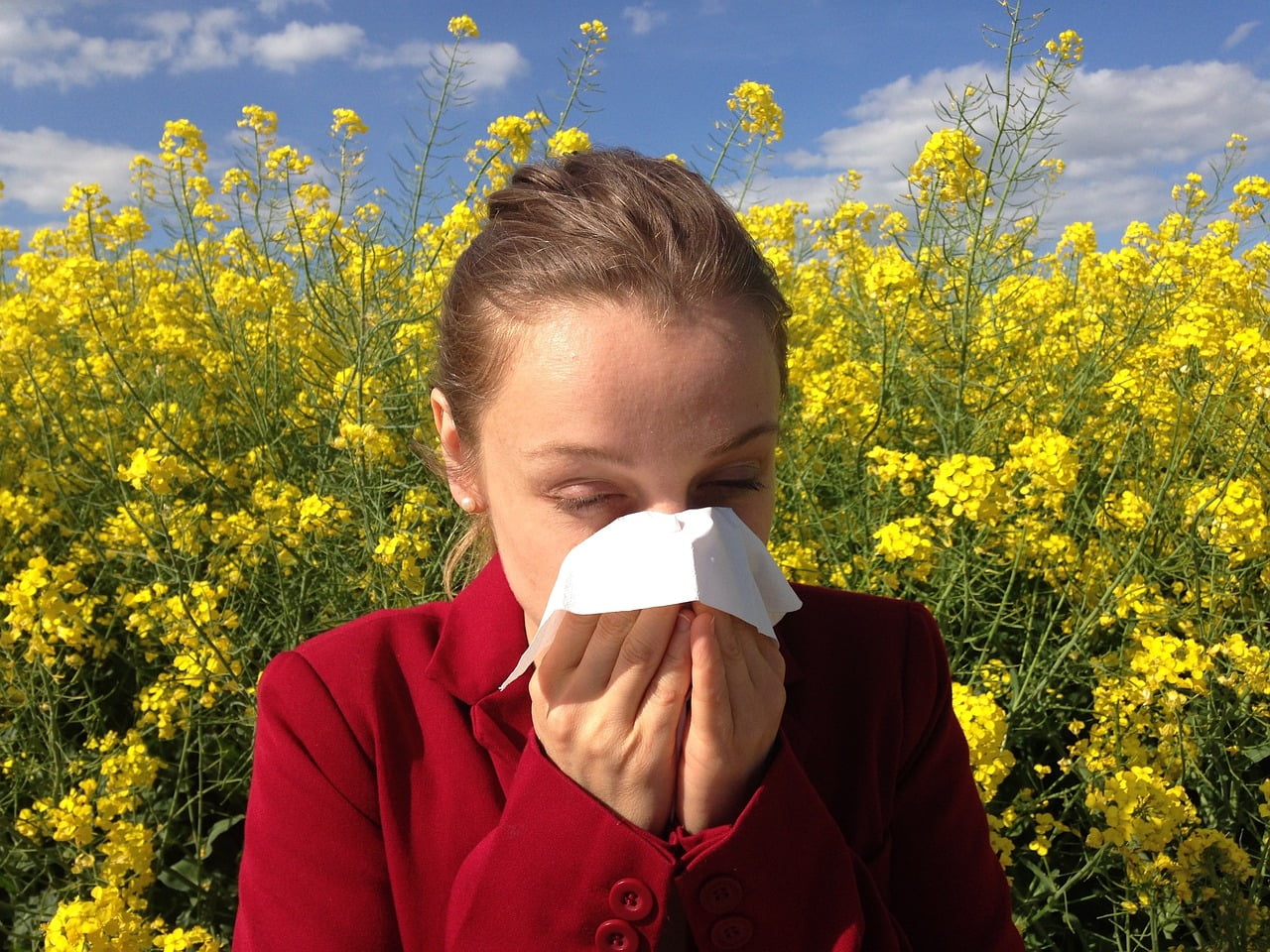In our quest to lead healthy and fulfilling lives, understanding the complexities of allergies is essential. From the sneeze triggered by pollen to more severe reactions caused by food, allergies can significantly affect our quality of life. They are more than just an inconvenience; they are a widespread health concern that impacts millions globally. With a variety of symptoms that can range from mild to life-threatening, it’s crucial for us to recognize the signs of allergies and know how to manage them. This article shines a light on everything you need to know about allergies, including their symptoms, causes, and the best practices for diagnosis and treatment.
We will delve into the different types of allergies, such as skin allergy, food allergy, and dust mite allergy, and explore common allergy symptoms that can serve as early warning signs. Our discussion will also cover the latest in allergy testing and diagnosis, ensuring you understand how to identify and combat your allergies effectively. From the best allergy medicine to innovative treatments like oral allergy syndrome therapy, we aim to provide a comprehensive overview of allergy management. Whether you’re navigating food allergy testing, seeking relief from allergy eye drops, or curious about gluten allergy symptoms, we’re here to guide you through the world of allergies, equipping you with the knowledge to lead a healthier, allergy-aware life.
What are Allergies?
Allergies are our body’s hyperactive response to substances that are generally harmless to most people. These substances, known as allergens, can trigger a range of symptoms that, while often mild, can sometimes be severe and life-threatening.
Definition of Allergies
An allergy occurs when our immune system mistakenly identifies a normally harmless substance as a threat. This leads to an overreaction that can manifest in various physical symptoms. Commonly, allergies involve the immune system producing antibodies called Immunoglobulin E (IgE), which are specific to the allergen. When these antibodies react with the allergen, they release chemicals like histamine, which cause allergy symptoms .
Types of Allergies
There are numerous types of allergies, each triggered by different allergens. Some of the most prevalent include allergic rhinitis, also known as hay fever, eczema, asthma, and food allergies. Each type affects different parts of the body and can vary in severity from mild irritation to potentially life-threatening reactions. Seasonal allergies, for instance, are caused by pollen and occur at certain times of the year, while perennial allergies can happen year-round due to elements like pet dander or dust mites .
Common Allergens
The list of substances that can trigger an allergic reaction is extensive. Common allergens include:
- Food: Nuts, milk, eggs, and shellfish are among the most common food allergens. Interestingly, while nearly any food can cause an allergic reaction, there are nine foods identified as the primary culprits behind most reactions .
- Inhalants: Pollen, dust mites, and molds are typical airborne allergens. These are inhaled and can cause respiratory symptoms such as sneezing, coughing, and wheezing .
- Contact Allergens: Latex, found in many everyday products like gloves and balloons, can cause reactions in some people. Similarly, contact with certain plants or chemicals can trigger skin allergies .
- Insect Stings: Venom from bees, wasps, and other stinging insects can provoke severe allergic reactions known as anaphylaxis .
- Medications: Certain drugs, including antibiotics and nonsteroidal anti-inflammatory drugs (NSAIDs), can also trigger allergic reactions, which might range from mild rashes to severe respiratory issues .
Understanding the various types of allergies and their triggers helps us manage them more effectively. By avoiding known allergens and seeking appropriate medical treatment, we can significantly reduce the impact of allergies on our lives.
Symptoms of Allergies
Common Symptoms
We often notice that allergy symptoms can affect various parts of our body, including our airways, sinuses, nasal passages, skin, and digestive system. The reactions can vary widely, from mild irritations like sneezing and itchy eyes to more severe conditions such as difficulty breathing and anaphylaxis. For instance, hay fever, or allergic rhinitis, can lead to sneezing, itching of the nose, and watery eyes, while a food allergy might cause tingling in the mouth or swelling of the lips and throat .
Symptoms by Allergen Type
Each type of allergen can trigger distinct symptoms. For example, inhalant allergies from pollen or dust might cause a runny or stuffy nose and itchy eyes. In contrast, contact with certain medications can lead to skin rashes, facial swelling, or even wheezing. Insect stings are particularly notorious for causing severe reactions like swelling at the sting site and difficulty breathing .
Skin conditions such as eczema, triggered by allergens, can cause the skin to flake or peel . Additionally, respiratory reactions to allergens can exacerbate asthma symptoms, increasing the frequency of wheezing and shortness of breath . It’s crucial to recognize the specific symptoms associated with different allergens to manage and treat them effectively.
Anaphylaxis Symptoms
Anaphylaxis is a severe, potentially life-threatening allergic reaction that can occur suddenly and worsen quickly. It can involve multiple areas of the body, including the skin, respiratory system, gastrointestinal tract, and cardiovascular system. Symptoms may start with mild allergic reactions like a runny nose or skin rash but can quickly escalate to more severe signs such as trouble breathing, a rapid drop in blood pressure, and loss of consciousness. Anaphylaxis requires immediate medical attention as it can be fatal if untreated .
Understanding these symptoms and their potential severity helps us prepare to take swift action, whether that means administering an antihistamine for mild symptoms or seeking emergency medical care for signs of anaphylaxis. Recognizing the early signs and knowing how to respond can significantly improve outcomes for those with severe allergies.
Causes and Risk Factors
Immune System Response
Allergies are fundamentally the result of our immune system’s reaction to substances that are usually harmless to most people. When we first encounter an allergen, our immune system might overreact by producing antibodies known as Immunoglobulin E (IgE). These antibodies are designed to attack the allergen, leading to the release of histamines and other chemicals, which cause symptoms like wheezing, itching, and runny nose . The immune system, which is supposed to protect us from infections by destroying harmful microorganisms, can mistakenly identify innocuous substances like pollen, mold, or pet dander as threats, triggering allergic reactions .
Genetic Predisposition
Research has shown that allergies can run in families, suggesting a strong genetic component to allergic conditions. If one has allergies, it is more likely that their children will also develop them. This familial tendency is known as atopy. Genome-wide association studies have identified specific gene variations that may influence the development of allergies. Variations in genes that affect the immune system’s response can make certain individuals more susceptible to allergies .
Environmental Factors
Environmental factors play a significant role in the development and severity of allergies. Exposure to pollutants like cigarette smoke, dust, or high levels of pollen can exacerbate allergic reactions. Living in environments that are rich in allergens such as dust mites, pet dander, and mold spores increases the risk of developing allergies. Moreover, changes in living conditions or locations can expose individuals to new allergens, potentially triggering allergic responses .
Managing allergies effectively involves understanding these causes and risk factors. By recognizing our body’s responses and the genetic and environmental influences, we can better prevent and treat allergic reactions, enhancing our overall health and well-being.
Diagnosis and Testing
Doctor Consultation
When we suspect allergies, the first step is often a consultation with an allergist. We should be prepared to discuss our symptoms, such as runny nose, red eyes, wheezing, and itchy skin, and any potential triggers we’ve encountered . It’s crucial to detail our medical history, current medications, and any family history of allergies or asthma . During the visit, our allergist will examine our ears, nose, throat, breathing, and skin to assess our condition without the influence of any treatments like antihistamines .
Skin Tests
Skin tests are a common method for diagnosing allergies. During a skin prick test, small amounts of potential allergens are applied to the skin, usually on the forearm or back, and the area is then pricked to allow the allergen to enter just under the skin . We can expect minor discomfort similar to a mosquito bite, and results are typically ready within minutes . In some cases, an intradermal test may be conducted by injecting a small amount of allergen into the skin, which is useful for diagnosing allergies to insect venom or penicillin . Patch tests might also be administered, where allergens are applied to patches on the skin to check for delayed reactions, commonly associated with contact dermatitis .
Blood Tests
Allergy blood tests are another essential diagnostic tool, especially when skin tests are not suitable. These tests measure levels of Immunoglobulin E (IgE) antibodies in our blood. A Total IgE test determines the overall level of IgE, while Specific IgE tests identify reactions to particular allergens . Blood tests are particularly useful for diagnosing allergies like allergic rhinitis, anaphylaxis, and contact dermatitis when skin conditions or medications might interfere with skin testing results . Blood is typically drawn in a lab, and while the procedure is quick, results can take a few days .
By combining detailed consultations with our allergist and utilizing both skin and blood tests, we can accurately identify the allergens that trigger our symptoms. This comprehensive approach ensures that we receive a personalized treatment plan to effectively manage our allergies.
Conclusion
Through the exploration of the nature of allergies, their symptoms, causes, and diagnostic methods, this article has offered a comprehensive insight into understanding and managing allergic reactions. By delving into the immune system’s mechanisms and the impact of genetics and environmental factors, we have illustrated the complexities involved in identifying and combating allergies. It is evident that with proper diagnosis and treatment, including the use of allergy skin tests and blood tests, individuals can significantly improve their quality of life despite the challenges posed by various allergens.
Reflecting on the information presented, it becomes clear that the journey to managing allergies effectively is multifaceted, encompassing a thorough understanding of one’s condition, professional medical advice, and adopting appropriate measures to mitigate symptoms. The significance of this knowledge extends beyond individual health, emphasizing the importance of awareness and education in fostering a supportive environment for those affected by allergies. As we continue to advance in our methods of diagnosis and treatment, there arises an optimistic outlook towards achieving better control over allergies, thereby enhancing the well-being and lifestyle of millions worldwide.




